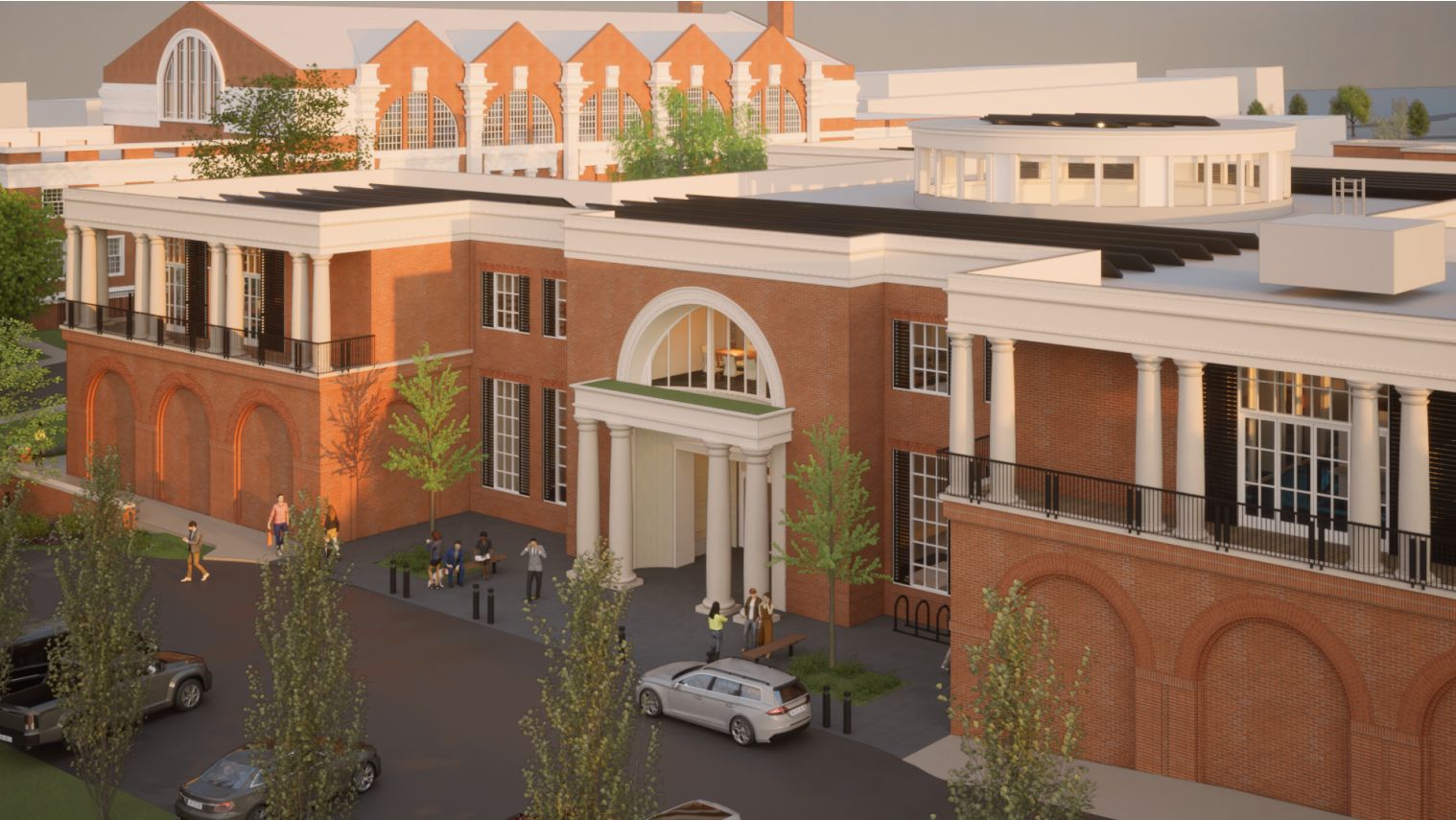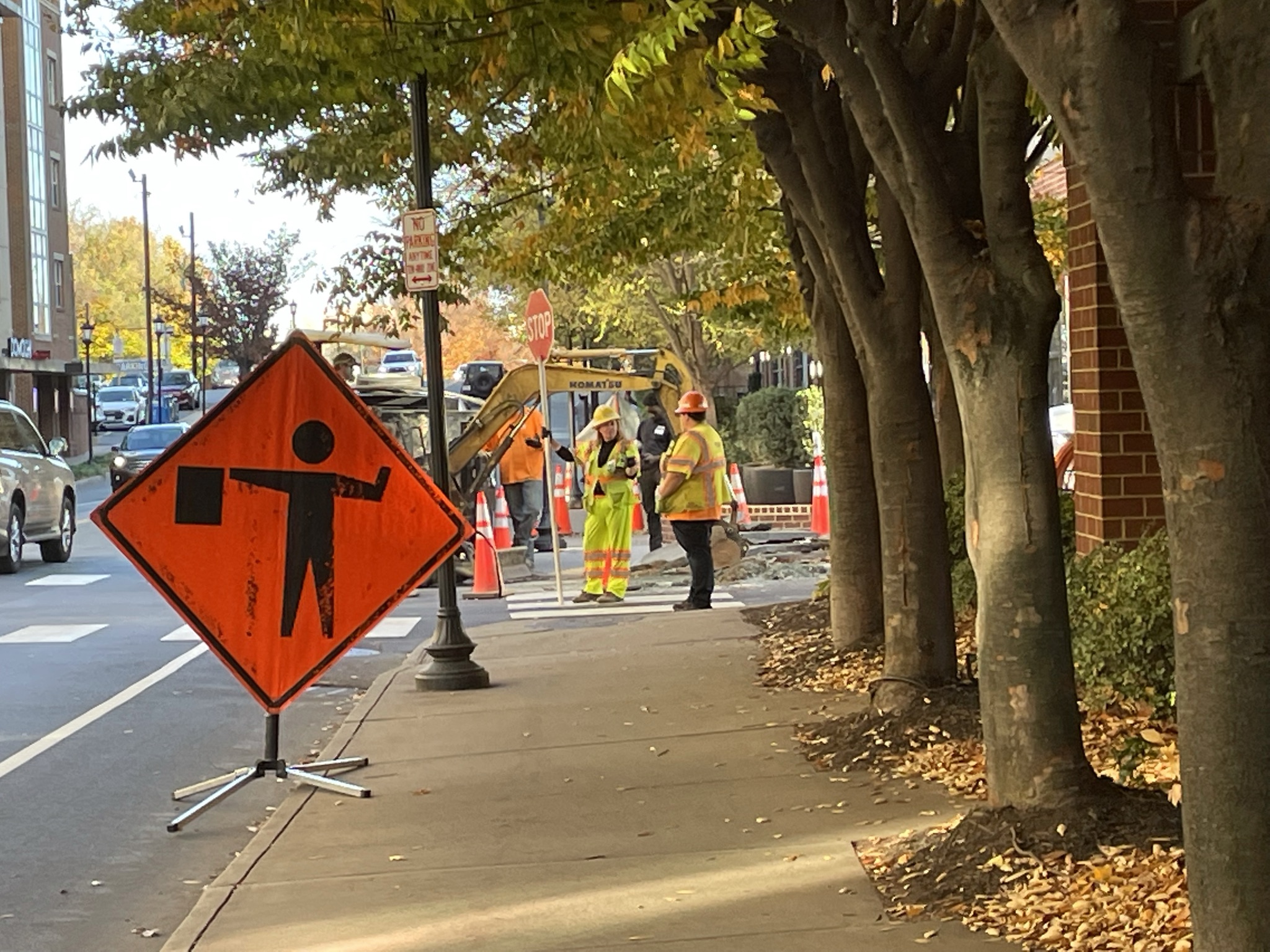Should areas designated as General Residential be eligible to be considered Medium Intensity Residential if all of the units will be guaranteed to be below-market? That was one question asked of City Council and the Planning Commission at a work session on September 27, 2022.
The Charlottesville Low Income Housing Coalition sought support for this position with a petition signed by 203 people out of a concern that the Inclusionary Zoning provisions suggested did not go far enough.
“You are talking about potentially allowing middle density into General Residential density,” said Phillip Kash of the real estate firm HRA Advisors. “That’s a significantly larger and density property.”
Kash said there are examples of that happening such as in Cambridge, Massachusetts, a city of over 118,000 in the Boston Metropolitan Area. He also said that those involve heavy subsidies.
In Charlottesville, the primary subsidy comes from the Charlottesville Affordable Housing Fund. This year, there is about $835,000 in new funding according to a Notice of Funding Availability that went out earlier this month. In April, Council learned that about $46.7 million has been disbursed through the fund since 2010.
Let’s hear more details about what’s being asked from Jennifer Koch of the firm Rhodeside & Harwell, the main contractor for the Cville Plans Together initiative.
“In General Residential areas, the Comprehensive Plan calls for three units or up to four units if you keep the existing house and divide it up into multiple units or you add units to the property,” Koch said. “The question is asking to gauge how you all feel about the idea to allow that same base density and everything up to that up to 12 would be allowed in General Residential if it was affordable at a level to be determined.”

Commissioner Hosea Mitchell was skeptical.
“It may be feasible based on two equity multiples but based on yield this would not be feasible,” Mitchell said. “So if the only way we could do this is… through subsidies.”
Much of the city’s current subsidies are being used for the redevelopment of Friendship Court by Piedmont Housing Alliance and the Charlottesville Redevelopment and Housing Authority.
Commissioner d’Oronzio said he was in support of anything that could be done to “privilege” construction of affordable housing, but he would need to see more analysis of how the financing would work.
Lee Einsweiler of Code Studio said zoning would also come into effect if the base density was increased. He said existing neighborhoods would likely change if Council agreed to make the increase.
“The decision you have to make if you choose to go there in General Residential is what is the urban form that you would allow and is it the same what you would build under the standard market affordability,” Einsweiler said. “Or are you actually adding bulk, adding mass, an additional story, additional lot coverage, less parking, less trees? Are we willing to go to those extents to get affordability in those settings?”
Commissioner Karim Habbab said the additional bonuses allowed under the inclusionary zoning provisions might be sufficient, but extending the density could open up new land for nonprofits to build new units.
“There are valid questions about scale and those are harder to tackled, but to answer the main question I do support it and we’ll figure out that scale afterwards I suppose,” Habbab said.
Commissioner Liz Russell said she could see the merits of trying to get more units in neighborhoods that are more wealthy and historically more segregated, but she said the Future Land Use Map also established some basic parameters for the community to expect.
“At the same time it’s also contrary to what we’ve said the density and form and height should be in those neighborhoods,” Russell said.
Commissioner Carl Schwarz said he supported the idea.
“For one, it’s not likely to happen unless somebody’s going to give a grant or subsidy so it’s not like we’re going to see 12-unit buildings throughout all of the city,” Schwarz said.
Schwarz added that making this change would fulfill the Comprehensive Plan goal of providing more affordable housing. He said he was not concerned about the issues of form, pointing out that apartment buildings were constructed in the Venable neighborhood before the first zoning code was enacted in 1929.
“So we’re saying, if you can make it work out and get the funding and you can do it, and you have three or four market rate units and everything else over that is affordable, go for it, add up to 12 if you can fit them on the site,” Schwarz said.
Commissioner Rory Stolzenberg said the city should not listen to what he called a minority of skeptics and seek as much affordability as it can by allowing for reduced setbacks and fewer on-street parking spaces.
“To me I think it’s a no-brainer to allow additional bulk and to allow those bonuses,” Stolzenberg said. “At the very least we need to be maxing out the current envelope that a building can be built to.”
Chair Solla-Yates said he supported allowing the additional density.
“I know this will raise some hackles because this could mean some visual changes in some areas but we’re talking about a small number of players who are out to do something and I want to help them,” Solla-Yates said.
Council will make the actual vote.
Councilor Sena Magill said she supported the idea as long as the new rules don’t make it easier to build student housing rather than housing for people with low incomes.
“Students make the classification of being below 50, 60, 40, 30 percent of [Area Median Income] usually. The students are living on loans.” Magill said. “Not that many of our students don’t deserve good housing and fair and affordable housing so they can move forward in life but that’s a separate area for our needs.”
Magill said she didn’t think this would greatly change the character of Charlottesville.
City Councilor Michael Payne said he also supported additional bonuses for density.
“To my mind, in our Comprehensive Plan update and affordable housing strategy, the most important component is deeply affordable housing for zero to 30 percent of [Area Median Income],” Payne said. “The free market won’t provide that deeply affordable housing. That’s going to have to come from subsidy. That’s going to have to come from our Housing Authority and nonprofit developers.”
The Charlottesville Redevelopment and Housing Authority has recently begun purchasing property and closed on a property on Montrose Avenue on October 18. They’re also currently overseeing the renovation of Crescent Halls which did not include any additional density above the 105 units on site. Completion of that project has been delayed, as is the opening of new units at South First Street.
Councilor Brian Pinkston also supported the idea and he said the affordability levels could depend on who the developer might be for a specific project. He was not on Council when the Comprehensive Plan was adopted, and he did have a concern how many changes to the Future Land Use Map might be perceived.
“And it feels like this is sort of doing an end run around all those conversations that were had,” Pinkston said.
Mayor Snook was sympathetic to that argument because he said some parts of the city may not be able to handle the additional traffic, whether it be vehicular, pedestrian, or non-motorized.
“We told folks last year that the difference between General Residential and Medium Intensity will be related to things like the carrying capacity of the streets and other issues like that,” Snook said.
Snook said there needs to be a very clear recognition that this approach would not work without deep subsidies. He did not support the idea.
“My first objection to it overall is that I think this is fundamentally different and to some extent a betrayal of what we wound up telling people last year,” Snook said.
Vice Mayor Wade did support the idea and suggested the Housing Authority be specifically listed as one of the entities who would be developing the units.
“It’s not just one thing that can do it,” Wade said. “Here we’re looking at the housing fund, we’re looking at Habitat, Piedmont Housing Alliance, and bonus units and things but i think we need to have the Housing Authority. They know what they’re doing. They know the population. They know how to tap into those funds, some funds they can only tap into.”
Other bits of information:
- There would be no more Planned Unit Developments in the new City Zoning ordinance. Hundreds of homes have been built using these customized zoning districts since the 1990’s at density levels higher than allowed under traditional R-1 zoning.
- Consultants are suggesting that there be no more discretionary review by City Council or the Planning Commission. That would mean all projects would be judged by staff on a technical basis, such as what’s happening with 245 units at 0 East High Street. More on that project coming in a future edition of the show. (Project to build 245 units at East High Street detailed at site plan conference, October 17, 2022)
- No design work has yet been conducted for a sidewalk on Stribling Avenue and other improvements to support 169 units made possible through a rezoning to Planned Unit Development this past April. Southern Development has committed to contributing $2.9 million, but their permission to begin building is not tied to whether the roadway is ever improved. (NDS: Extent of design work for Stribling Avenue sidewalk improvements not known, September 29, 2022)
Before you go: The time to write and research of this article is covered by paid subscribers to Charlottesville Community Engagement. In fact, this particular installment comes from the October 26, 2022 edition of the program. To ensure this research can be sustained, please consider becoming a paid subscriber or contributing monthly through Patreon.













Sean, thank you for putting this info out.
The “plan” being discussed suggests market-driven solutions in a random, irresponsible manner to a housing issue that is international in scope and growing in magnitude. It’s unrealistic to think that the current market can provide inexpensive units with its costs for materials, labor, and financing.
Mr. Stolzenberg’s remarks are uninformed and show his lack of how this all works, so once again he instead takes aim at residents who have a deeper understanding. Shame on him!
The City should sharpen its focus and build affordable housing with public moneys and on purpose in places where public transportation and other services are accessible. If they can’t do so at about $200,000/unit which translates to affordable rents, they need new agencies that can. The money needs to be spent more responsibly.
The new zoning would permit housing (rarely affordable!) to be put into slices of land any old place in the city. Nothing will enforce compatibility with the structure of the existing residences – so 3.5 stories next to a rancher or bungalow!
It’s time the City comes back down to the ground and fix the problem in a targeted, sensible way.